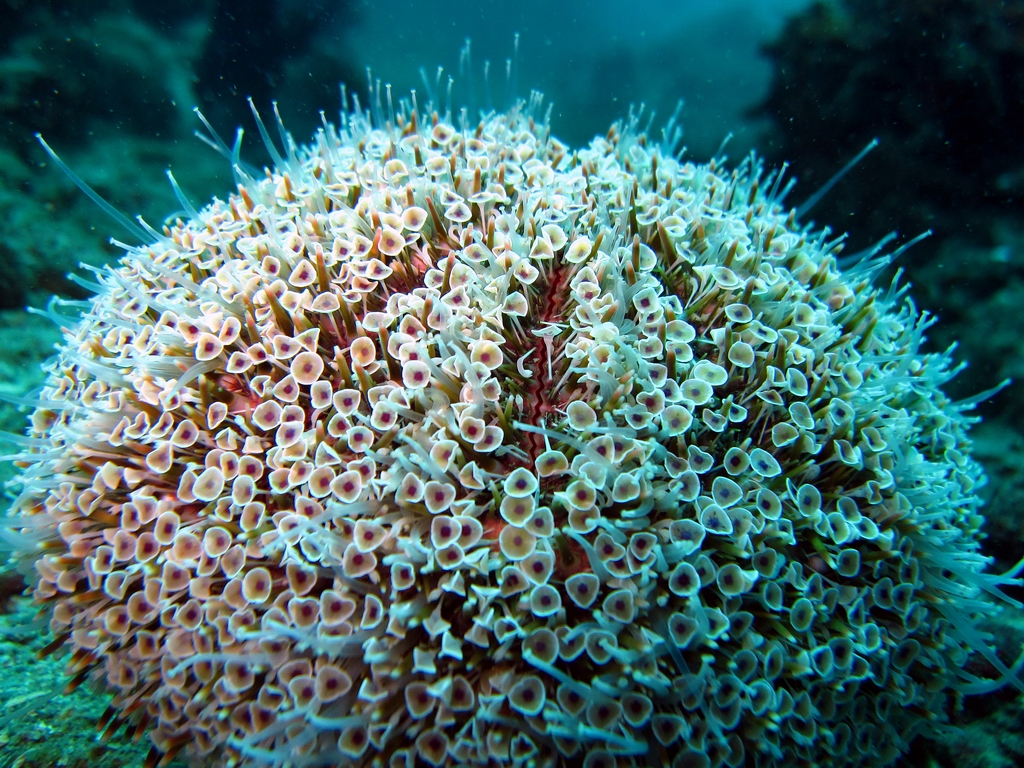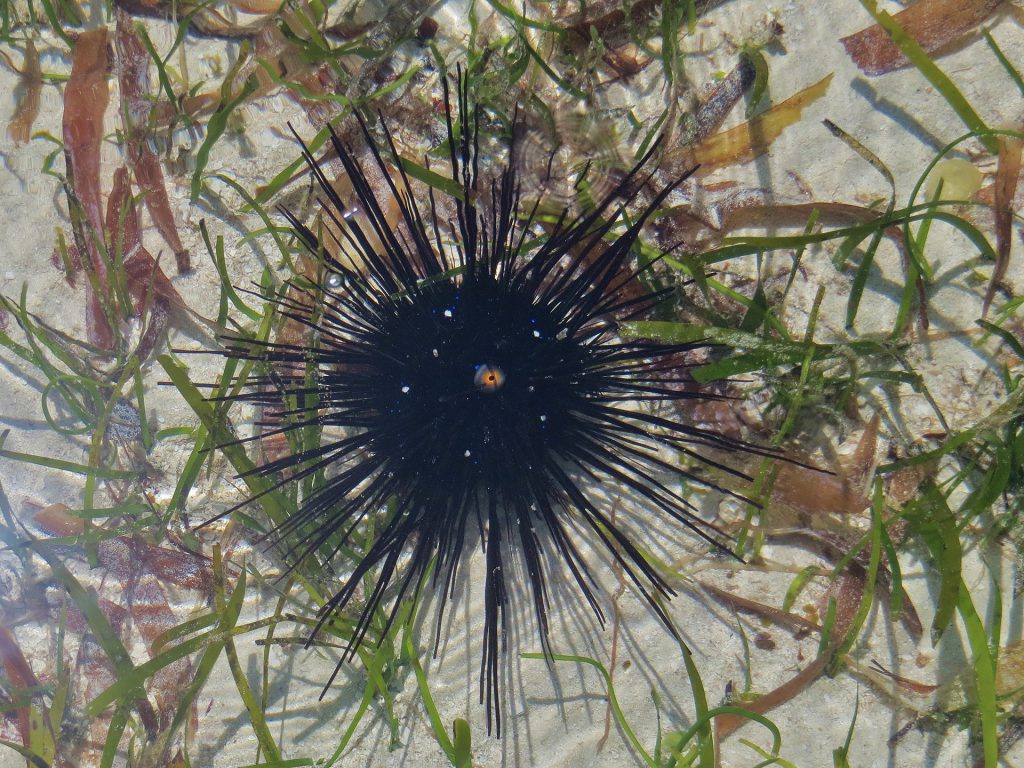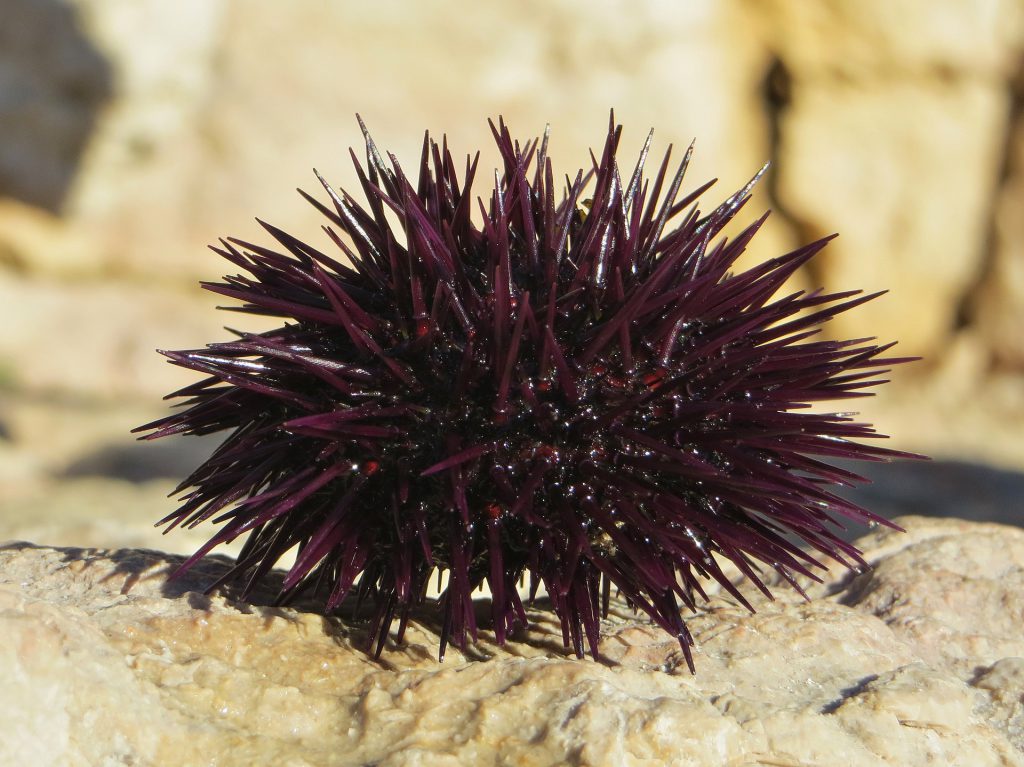By Mats
Hello! It’s me again. If you’ve interacted with me in the past two weeks (or have been within 5 metres of me tbh), you should know I’ve become obsessed with sea urchins. I consumed some of the devil’s lettuce a while ago and went on a Wikipedia deep-dive and absolutely fell in love with these creatures. In this article, I will try to spread this love to you!
1) They are beautiful
Just look at them! Look at their beautiful spikes and mesmerising colour. They come in a lot of different shapes and sizes, but they all have a few things in common. Sea urchins are spikey, have scarily beautiful colours and are all around just cool to look at! Some species are a bit too enthusiastic with loving you and can sting you to death if you hug them.
2) Their very interesting anatomy
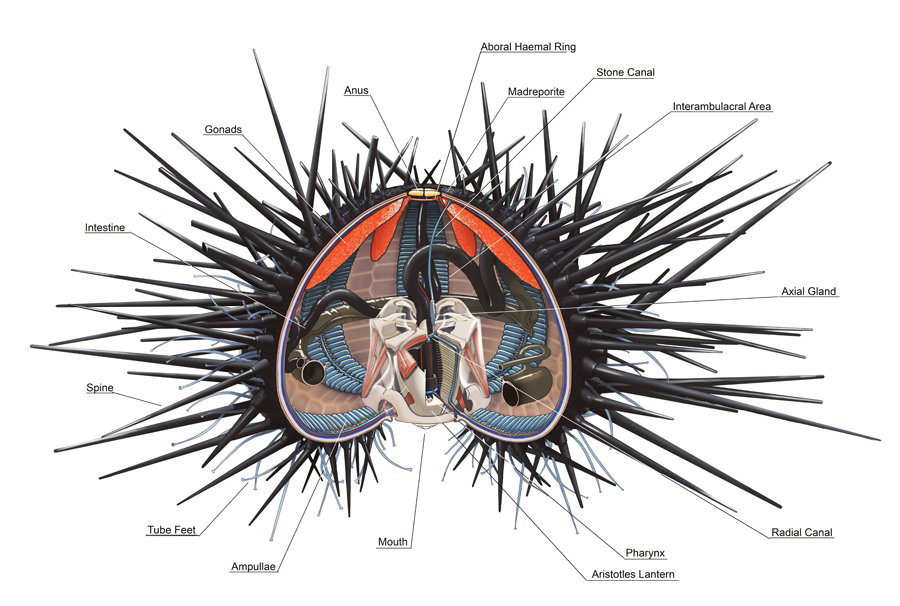
Urchin
Unlike many other animals, sea urchins are radially symmetric. This means that they’re R O U ND. Their outside layer (what we’d call a skin) is composed of plates of calcium carbonate. You’d think they have an exoskeleton then, but you’d be wrong! On top of these plates they also have some muscle and actual skin. This means they’re very similar to us! (minus the spikes) Also, as you can see in the picture, they’ve got little feet underneath so they can wiggle around a bit. Not much more than that tho, they mostly just stay stationary near coral reefs. What’s also found underneath is their mouth, which we’ll get to now.
Caution: Their mouth is very scary looking
(but also very cool)
3) Their mouth

So what are we looking at here? Well, like most (if not all?) animals, sea urchins have to eat. They do this with an amazing invention called a mouth. Let’s go over it part by part. Right in the centre you’ll see five little teeth which the sea urchins uses to chew. Right underneath you’ll find some sort of tongue? I don’t know, it’s very mysterious and complicated. All the other spikes and thingies are used to pull the food in and grind it down a bit before it enters the mouth. Fun fact, the chewing apparatus is called the Aristotle’s Lantern, Because:
In reality the mouth-apparatus of the urchin is continuous from one end to the other, but to outward appearance it is not so, but looks like a horn lantern with the panes of horn left out.
Aristotle, History of Animals
I don’t know what Aristotle was on about, but he should’ve just said it looks fucking amazing, because it does.
4) Their brain (or lack thereof)
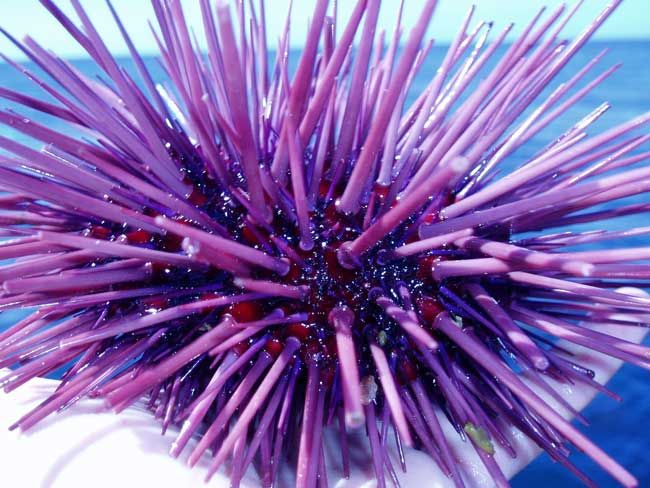
In humans, brains just do bad stuff. They make you sad and occasionally let you join Sint-Jansbrug. Sea urchins therefore decided not to have one and to just spread their neurons all over their body. This means that sea urchins are 100% brain. (citation needed) Can you just imagine the amazing ideas they have? Sadly I do not speak sea urchin yet, and neither do they. They don’t speak. I cry about this every night.
What they can do, however, is see! They’ve got light-, touch- and chemical-sensitive cells all over their body, especially in their spikes. So beware if you decide to pee in the sea again, they’ll know.
5) They’re absolute sluts

So sea urchins have male and female sexes, but you can’t see that from the outside! They don’t have any external genitals. In order to reproduce, they do the coolest thing I’ve heard any animal do. Although apparently more sea creatures do this, but let’s just ignore that.
In order to reproduce, male sea urchins do the chaddest thing possible and just squirt their sperm all around them into the seawater. Can you imagine if humans did this? (hopefully not) Female sea urchins squirt their eggs into hopefully the same seawater, after which fertilisation takes place. Some species opt to carry their eggs around, though, which is decidedly less cool.
After a couple of months, the larva which sprang from the fertilised cells changes into a proper sea urchin in a process that takes less than an hour! When they’ve finally reached their peak form and are ready to consume the tasty tasty algae (or occasional sea cucumber), they can vibe and amaze us. Given that they don’t get eaten by crabs (fuck crabs), they can live for as long as twenty years!
I hope you’ve gotten as enthusiastic about sea urchins as I am. If not, you’re probably a crab and I’m unsure how you’re reading this.

